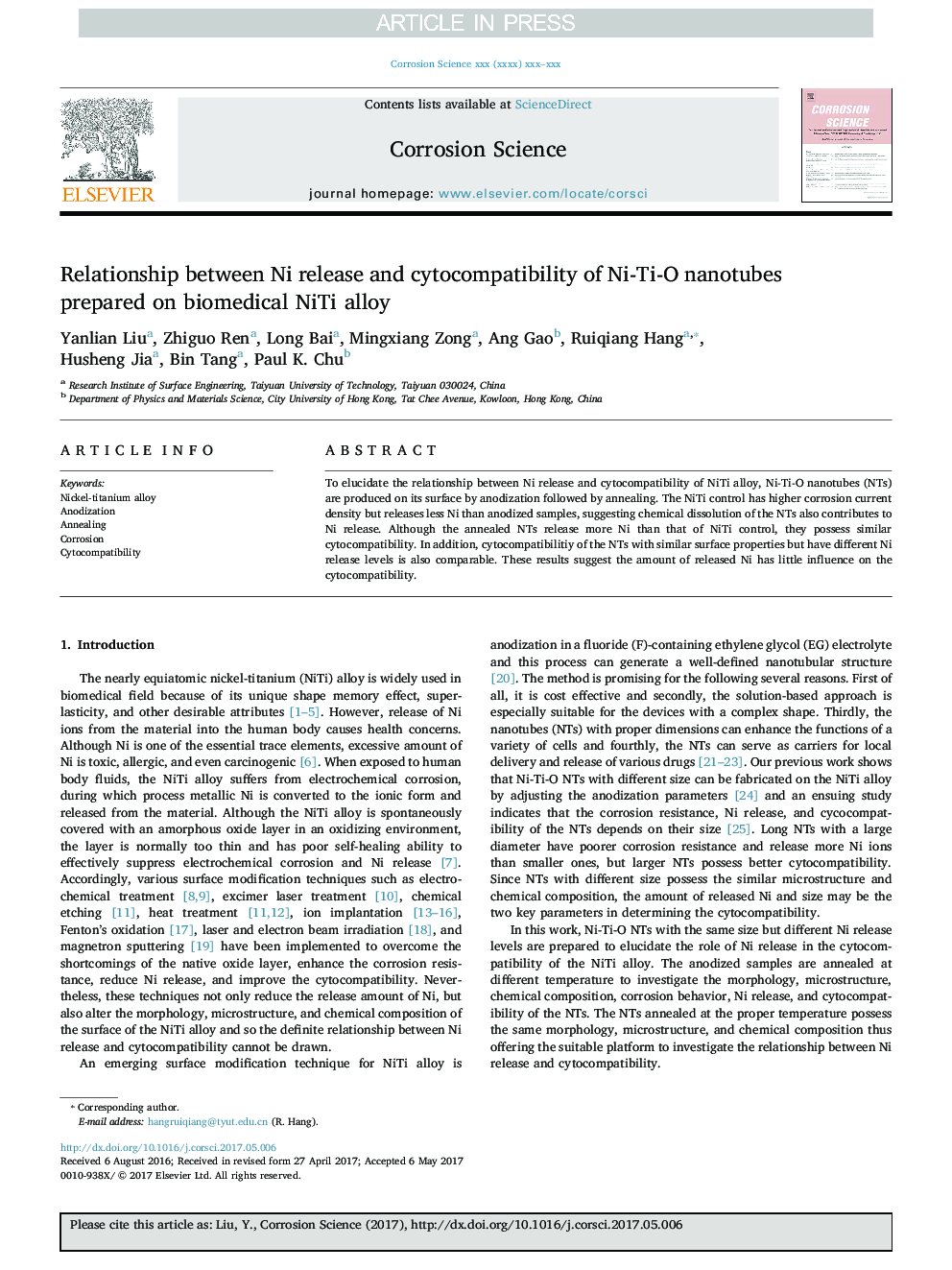| Article ID | Journal | Published Year | Pages | File Type |
|---|---|---|---|---|
| 5439996 | Corrosion Science | 2017 | 8 Pages |
Abstract
To elucidate the relationship between Ni release and cytocompatibility of NiTi alloy, Ni-Ti-O nanotubes (NTs) are produced on its surface by anodization followed by annealing. The NiTi control has higher corrosion current density but releases less Ni than anodized samples, suggesting chemical dissolution of the NTs also contributes to Ni release. Although the annealed NTs release more Ni than that of NiTi control, they possess similar cytocompatibility. In addition, cytocompatibilitiy of the NTs with similar surface properties but have different Ni release levels is also comparable. These results suggest the amount of released Ni has little influence on the cytocompatibility.
Related Topics
Physical Sciences and Engineering
Materials Science
Ceramics and Composites
Authors
Yanlian Liu, Zhiguo Ren, Long Bai, Mingxiang Zong, Ang Gao, Ruiqiang Hang, Husheng Jia, Bin Tang, Paul K. Chu,
